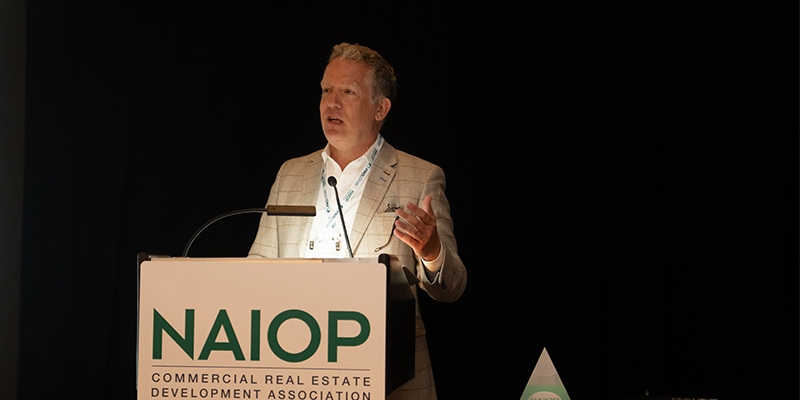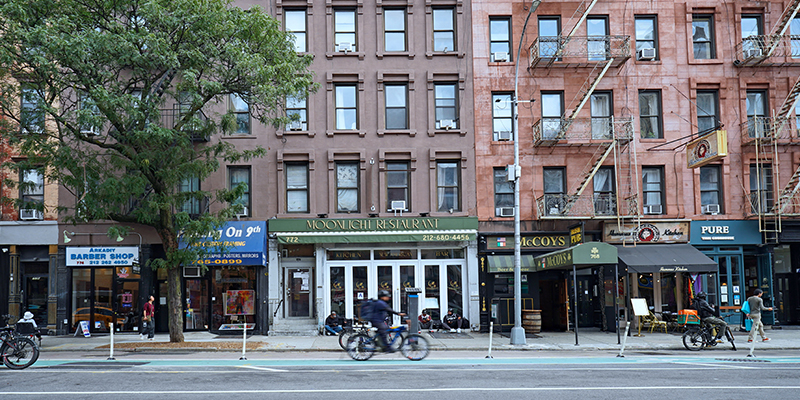By Gaku Ueda
Commercial real estate has entered a new stage of digital change with artificial intelligence (AI). The industry already enjoys the advantages of IoT devices, smart sensors and digital twins. Now, with AI, building management can be done smarter.
AI in the physical world is the blend of mechanical systems, infrastructure and robotics, enabling buildings to sense, analyze and act without human intervention. This shift isn’t incremental – it’s transformational, opening a new chapter where buildings are not just smart but self-optimizing, self-maintaining and even self-patrolling.
From Connected Systems to Independent Infrastructure
In the past, digital tools in CRE mainly helped collect data like meters, sensors and analytics dashboards, allowing building owners to see how their buildings performed. Physical AI takes that a step further: It helps buildings act on that data autonomously.
A notable example is The Edge in Amsterdam. The 430,000-square-foot office is known for its smart setup, which includes over 30,000 sensors that work with AI systems. These sensors help the building adjust lighting, heating and space use based on the number of people present and outside conditions. Dubbed the world’s greenest building, The Edge saves more than 70% of energy compared to regular offices and is expected to have an annual return of 13.5% from energy and operating savings.
This ability to respond quickly to usage and weather isn’t just for trophy buildings — it’s also a possibility for many mid-sized properties, especially when paired with AI.
AI-powered Robotics: The Physical Extension of Intelligence
The clearest example of AI is seen in robotics. With more labor shortages, safety needs and complex tasks, AI robots are taking on jobs that were once done by human teams.
In China, service robots for tasks like cleaning and security are becoming more widespread. Robotics are also useful in managing warehouses and construction processes for better efficiency and productivity, while taking pressure off manual labor.
In Asia, Japan’s Aeon Mall Corporation started using AI-powered cleaning robots. These robots plan cleaning paths, avoid people and adjust based on the number of people in the area. Over three years, these systems saved up to 40% in labor costs and increased cleaning consistency.
By combining AI with robots, CRE operators gain valuable data insights and extra help with work capacity. This improves staffing issues, lowers insurance risks and keeps services steady in essential jobs.
Unlocking Tangible ROI Across Building Systems
Physical AI goes beyond robots and smart technology, showing its crucial role in key infrastructure systems. For example, predictive maintenance is critical in aging CRE portfolios.
A Fortune 500 manufacturer implemented AI across 165 HVAC chillers, integrating three years of sensor data within four days. The machine learning model was trained to achieve 73% precision and 71% recall in predicting chiller failures, surpassing the manufacturer’s target ranges. This proactive approach enabled early detection of potential failures, reducing unplanned downtime and maintenance costs.
In another instance, New York-based real estate investor Cammeby’s International used AI to cut HVAC energy consumption by 15.8%, saving $42,000. This move also led to better occupancy comfort given that the AI was able to help with temperature control more effectively.
Beyond Saving Costs: Enabling Ongoing Improvement
Traditionally, CRE capital planning has been reactive, with systems reviewed in annual cycles. Physical AI changes this by allowing for constant improvement. AI can suggest upgrades, start maintenance before issues arise, and adjust energy use based on grid or tenant behavior signals.
Property managers can switch from manual inspections and regular audits to fully autonomous performance management. This reduces human error, enables 24/7 responsiveness and opens the door to performance-based building models, where value is measured by how intelligently a building can run itself.
Challenges to Address
Even with its promise, using physical AI has several real-world challenges. Around 59% of facility managers struggle to develop adequate strategies for implementation, and the following hurdles are largely to blame:
- Data fragmentation: Many buildings still use proprietary systems that do not interoperate, making AI integration challenging. It’s essential to work with AI technologies that can overcome this issue.
- High capital costs: Updating a building with physical AI systems can be expensive, depending on the system’s complexity. However, options like performance contracts, tax credits and green bonds are helping to reduce these costs.
- Governance and trust: AI systems, especially those that manage physical functions or work with people, need ways to be overridden, checked for reliability, and ensure compliance with local regulations.
Key Steps for CRE Leaders
To overcome these challenges and unlock the power of physical AI, senior leaders in real estate should focus on these key steps:
- Check data and system readiness: Learn about a building’s current setup, find gaps and see where data quality or access might slow down AI use.
- Focus on important use cases: Begin with projects where returns are clearly measurable and identifiable, such as energy savings.
- Create teams from different departments: Physical AI involves IT, facilities, sustainability and operations. Success depends on cross-departmental collaboration from day one.
- Set up a management framework: Establish protocols for AI system accountability, human override and cybersecurity as intelligent systems take on more physical tasks.
The Smart Building: Not Science Fiction, But Strategic Imperative
The future of CRE is about being proactive. Whether it’s an AI system that adjusts HVAC in response to grid carbon intensity or a robot that inspects HVAC coils at 3 a.m., these tools turn buildings from passive infrastructures into intelligent systems that improve over time.
Singapore is recognized as a global leader in applying technology to achieve urban excellence and drive sustainability, in line with the country’s Green Plan goals that seek to drastically improve energy efficiency in buildings. To help drive this strategy is Singapore’s Smart Nation, an initiative led by the Ministry of Digital Development and Information to redefine how technology is used to improve citizens’ lives and boost trust, growth, and community. The Smart City’s solutions feature a combination of data, sensors, and automation, applying innovations like autonomous mobile robots to improve operational efficiency and resilience in areas like facilities management.
These technological changes align with global goals: ESG (Environmental, Social, and Governance) reporting, improving the tenant experience and ensuring staff manage their workload. As climate mandates and carbon pricing rise globally, AI is not only a competitive marketing edge but also a necessity for overall business.
AI represents a fundamental evolution in how commercial real estate is designed, managed and valued by creating connected, aware, responsive and autonomous buildings.
AI is no longer a conceptual experiment for CRE executives seeking future-proof portfolios: It is a deployable strategy with immediate operational, financial and ESG benefits.








